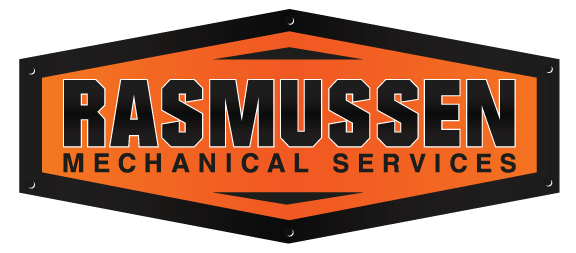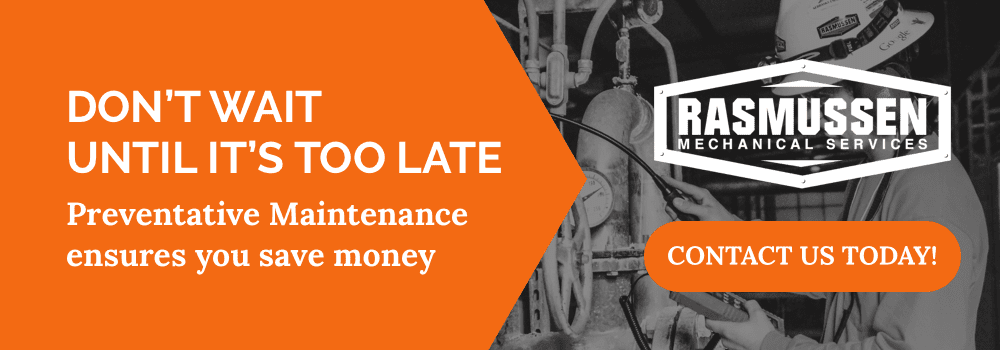The crisp fall air has moved into the Midwest. It’s the time of the year where it’s too cold for air conditioning but too warm for heating. Building owners and maintenance managers alike are enjoying the few weeks of cost savings that come with turning off both systems. Don’t get too cozy this fall as the chilly winter is right around the corner. To get ahead of the game, we’ve prepared a list of must-know boiler tips for winter to get your boiler functioning properly.
At Rasmussen Mechanical Services, and we’re here to give you the right tools to be proactive when it comes to boiler maintenance. Use these preventive maintenance measures to keep your boiler up and running this winter, all while keeping your expenses down.
Preventative Maintenance
You might not think about the preventative maintenance for your boiler system when you’re soaking up the sun in June, but when fall and winter approach you will be happy you did. Setting a year-round maintenance plan helps prevents unexpected breakdowns, costly repairs, and also increases the longevity of your system. Not to mention, keeping your equipment maintained helps ensure the safety of your business and those working in it.
Setting a year-round #PreventativeMaintenance plan for your #boiler prevents major issues from arising. See what @RasMech suggests in their latest blog: Click To Tweet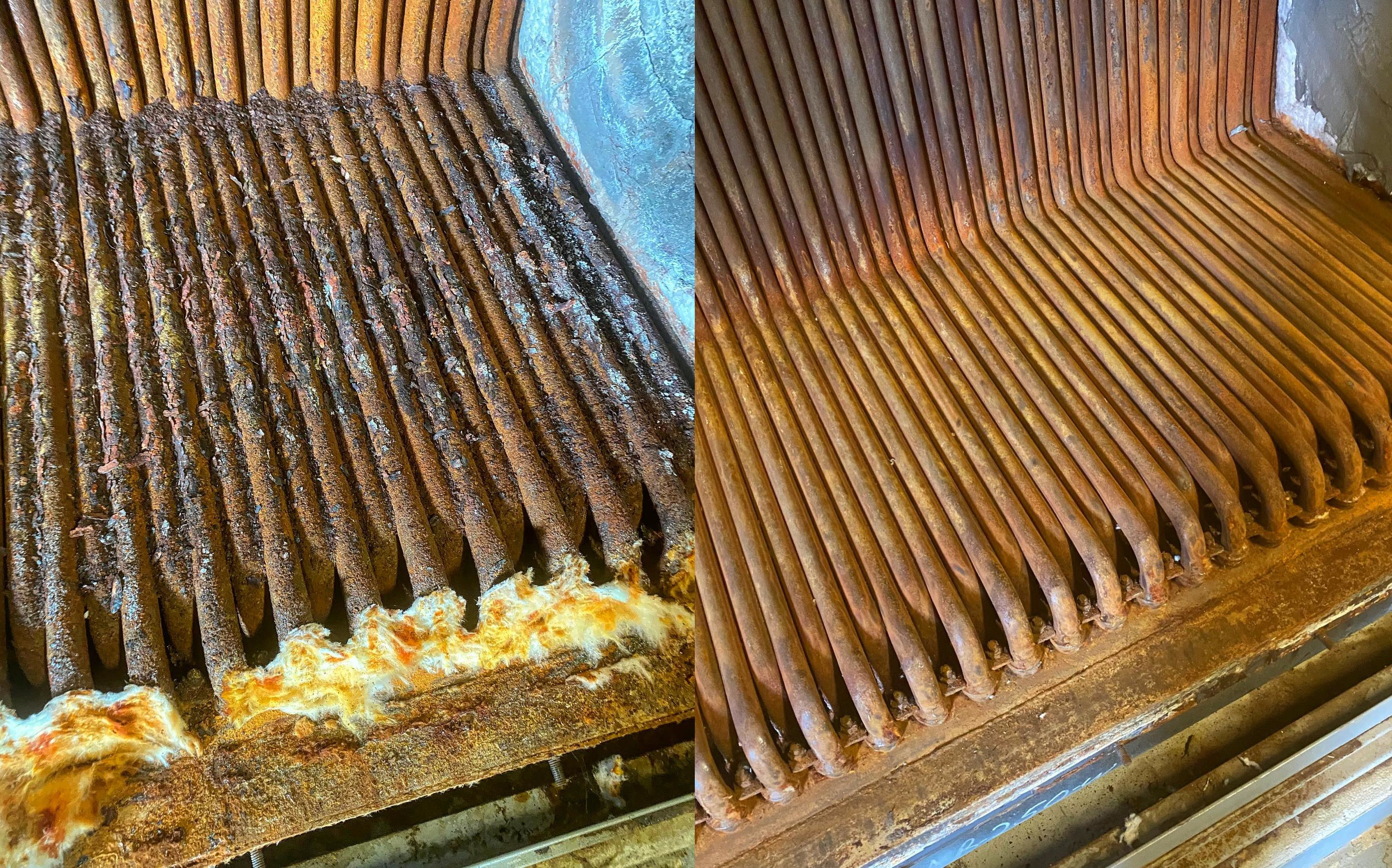

Tube cleaning improves boiler efficiency and longevity.
Keep these 3 things in mind when you’re going over your boiler system:
1. Schedule Regular Services: In a facility, you should expect to have your boiler serviced by a professional at least once a year. If your boiler is old, you may want to have it serviced once a quarter. During the appointment, the certified technician will check over the system, clean dirty components, and review boiler logs. Boiler maintenance can save you a lot of money in the long run and prevent repairs from coming up unexpectedly. Catching problems early will also prevent any significant damage, any costly repairs, and lead to few or no malfunctions.
2. Log History: Take the time to keep data on your boiler and its performance. Tracking your unit’s performance helps give insight into any potential future issues as well as providing insight into how you will need to deal with them. Check the performance to understand the efficiency of your system. If you see any differences, this will help your team factor in any actions that will need assistance later on. Be sure to include the following items on your boiler log sheets:
BOILER
Boiler(s) in service
Fuel in use
Operating time (hours)
Operating cycles(number)
Amount of fuel on hand
Boiler water level (normal, low, high)
Firing level (rate)
Flame condition (observed)
Boiler pressure (psig)
Boiler water temperature, hot water (degrees F)

Stack temperature, net (degrees F)
GAS FUEL
Pilot gas pressure (inches WC)
Burner gas pressure (ounces/square inch or psig)
Gas used (cubic feet)
OIL FUEL
Oil pump in service
Vacuum at oil pump (inches Hg)
Oil pressure at pump (psig)
Oil pressure at burner (psig)
Oil pressure at regulating valve (psig)
Atomizing medium pressure, air, steam (psig)
CONDENSATE SYSTEM (STEAM BOILERS)
Boiler feed pump in service
Condensate return temperature (degrees F)
Water level in condensate tank (normal, low, high)
Make up water rate (gallons)
BOILER WATER TREATMENT
Level of chemicals in treatment tank
Treatment pump in service (low, normal)
Boiler water sample taken
MAINTENANCE OR REPAIR OPERATIONS
Record these operations in the log sheets
[Download our boiler maintenance checklist & logs here to get started.]
3. Identify Issues: By scheduling a service check or tracking your boiler’s performance in a maintenance log, you’ll be able to identify warning signs early on. This will help identify build-up in piping, corrosion within the system, and more. Check for visual and audible issues as well! You can detect leaks, cracks and unusual noises just by checking on your boiler periodically.
- Make sure equipment is safe to operate. If the safety relief valve isn’t working properly, your boiler won’t be up to code. Make sure everything is safe to run before turning the system on. No gags or plugged valves allowed. Never bypass a safety device on any fired equipment. It is illegal and extremely dangerous.
- Check pressure gauges and controls. If gauges are out of calibration or controls aren’t working, you’re setting yourself up for a disaster.
- Clean the water level gauge. Make sure you’re able to clearly and accurately see what’s going on with the water level in your boiler.
- Repair and replace malfunctioning equipment. Equipment that isn’t functioning properly is often very inefficient. As a result, the malfunction may damage other parts of the system, making repairs significantly more expensive.
Protect your investments when you put a preventative maintenance plan in place. By taking care of your equipment before it breaks, you’ll see long-term reliability and cost savings.


Corrosion caused by poor feed water.
Examine Boiler Feedwater
Before you fire your boiler back up, it is important to ensure your feedwater is within acceptable limits. Raw water should be pre-treated, deaerated, and chemically treated to protect your boiler room equipment and the steam system in general. The most effective and lowest cost water treatment program goes in that order. Remove as much of the gas and impurities as possible mechanically, then treat the remaining traces with a good chemical treatment program.
Starting with good water keeps your system flowing efficiently and prevents system damage. Removing impurities is a necessary step for any boiler process.
Consider Making A Contingency Plan
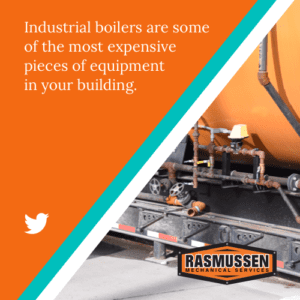

With a contingency plan in place, your facility will experience a smooth transition with little-to-no-disruption during an emergency. The added sense of security is worth it.
How to Get Started with Your Contingency Plan
We frequently receive inquiries about how to start a contingency plan. For that reason, we’ve broken up the four necessities of any program.
- Start by identifying potential problems that would have the most significant impact on your facility. Consider things like how long the facility would be out of commission, how productivity & profitability impact the company, and what would cause the most disruption to your facility if the equipment were to break down. Identify the most expensive and time-intensive parts. Then, start step two.
- Establish what your facility and business will do in the event of an emergency. Reach out to mechanical rental companies to ensure they have the parts or systems you need to have on hand. Develop those crucial relationships while your facility is operating at full speed so your operation can transition to the changes needed when it is not.
- Identify the equipment your facility needs to operate. Install a large enough generator to power those items in case of a shutdown. Be sure those systems either exist in your emergency facility or access to your emergency facility. If not, check if they are transferable to the facility, or if their functionality is easy to replicate.
- Finally, provide continual training for your staff. You never know when an emergency will happen. The more people who can handle a boiler system, the better. Implement updates to parts or procedures company-wide. Finally, train all new maintenance crew members on the latest equipment.
- Get Insured: Most boiler warranties and insurance policies require that you take this step due to the high cost and liability of boilers systems. Many insurers even need to see this plan before they will sign your policy. If you have not already, we encourage you to take a look over your policy. Make sure you’re fully covered, and your system is good to go in case of an emergency. If you aren’t sure, check with your insurance agent and your mechanical service provider. When disaster strikes, you’ll be thankful to have this in place.
- Get Familiar: Make sure you are conducting preliminary tests to check your boiler system is switched on and functioning before you need it. Taking the time to inform yourself and others about your system and its requirements every couple of months is key to making sure everyone is aware of how it works and the safety precautions to take in case your system breaks down.
What’s Next?
Whether you’re facing an unplanned shutdown or scheduled maintenance, Rasmussen Mechanical Services can help.
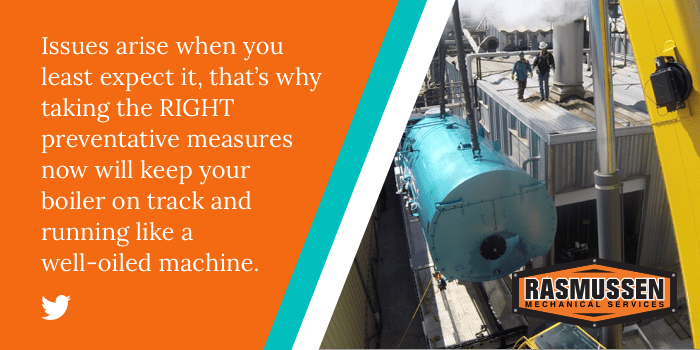

At Rasmussen Mechanical Services, we offer rental boilers along with a team of experts to help get your facility back up and running. We also understand disaster strikes at the most inconvenient time, which is why we offer 24-hour emergency service so you never have to wait for a solution.
Having a knowledgeable company service your boiler regularly will help you solve any issues that may arise. Check out our free downloadable checklist to help you complete proper boiler inspections. Reach out to our experts on our website, via email at sales@rasmech.com, or at 1-800-237-3141. Our technicians are ready to assist in all of your boiler needs.
